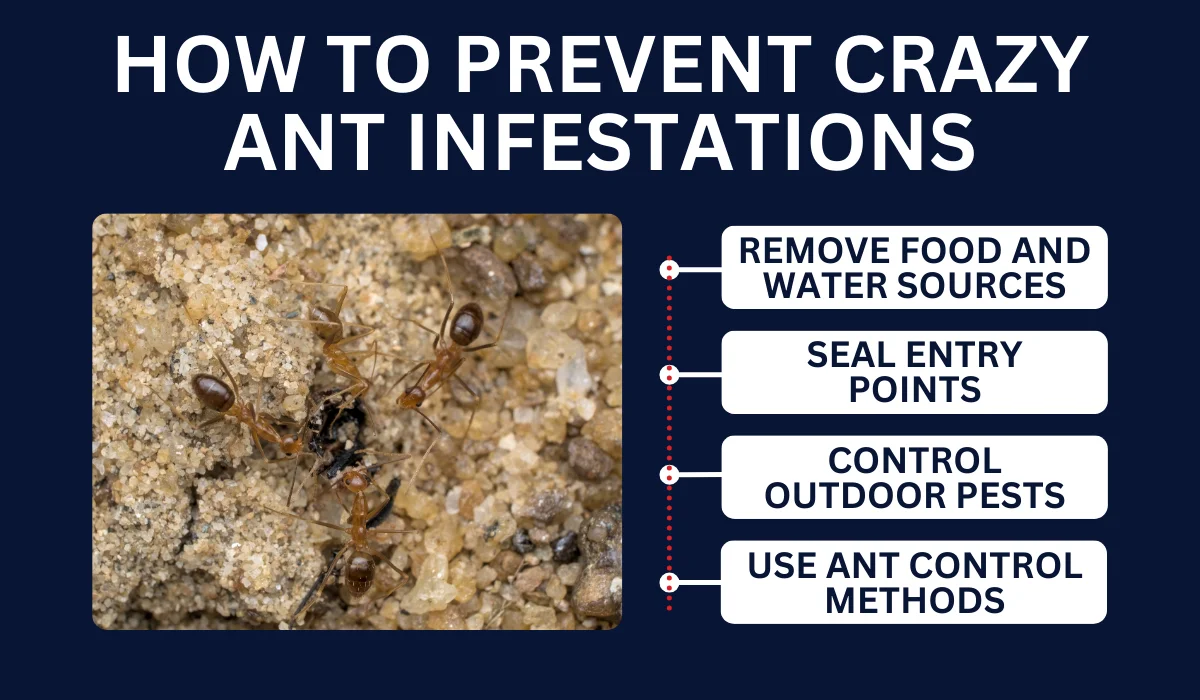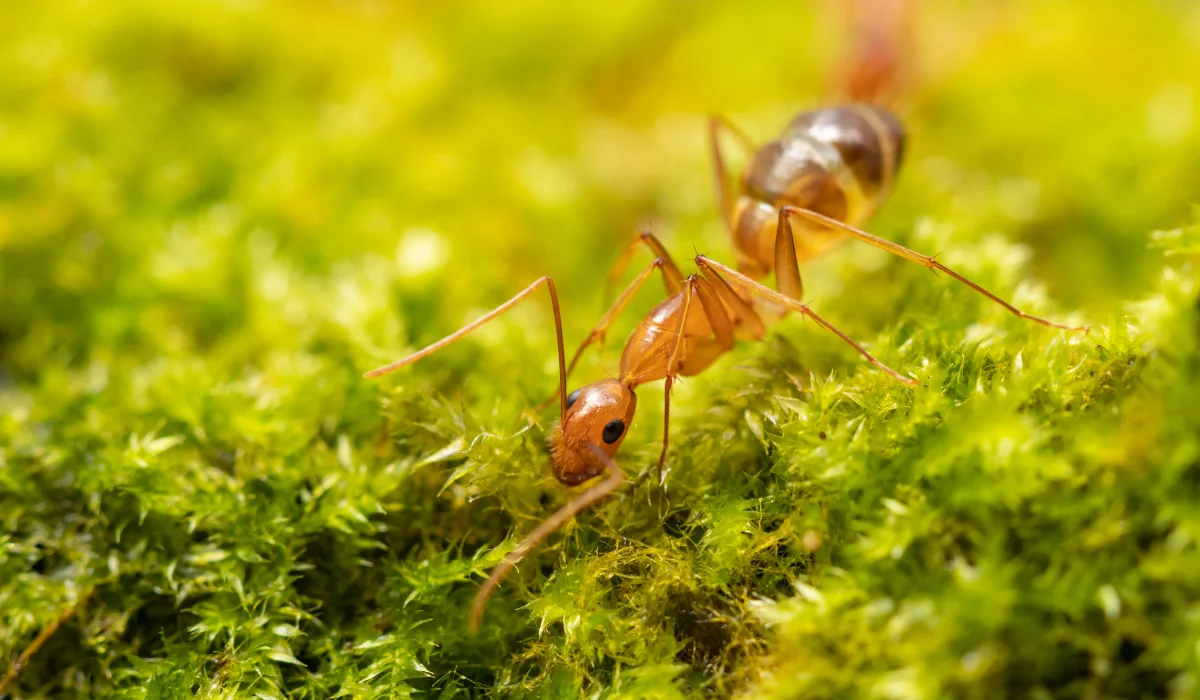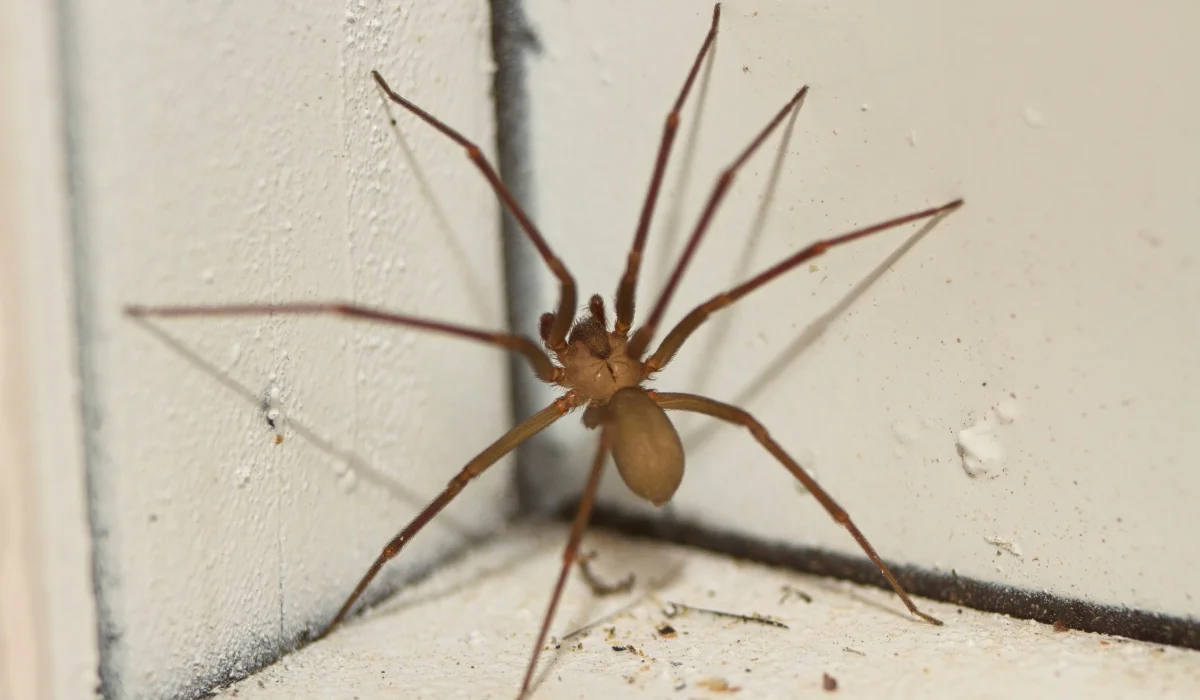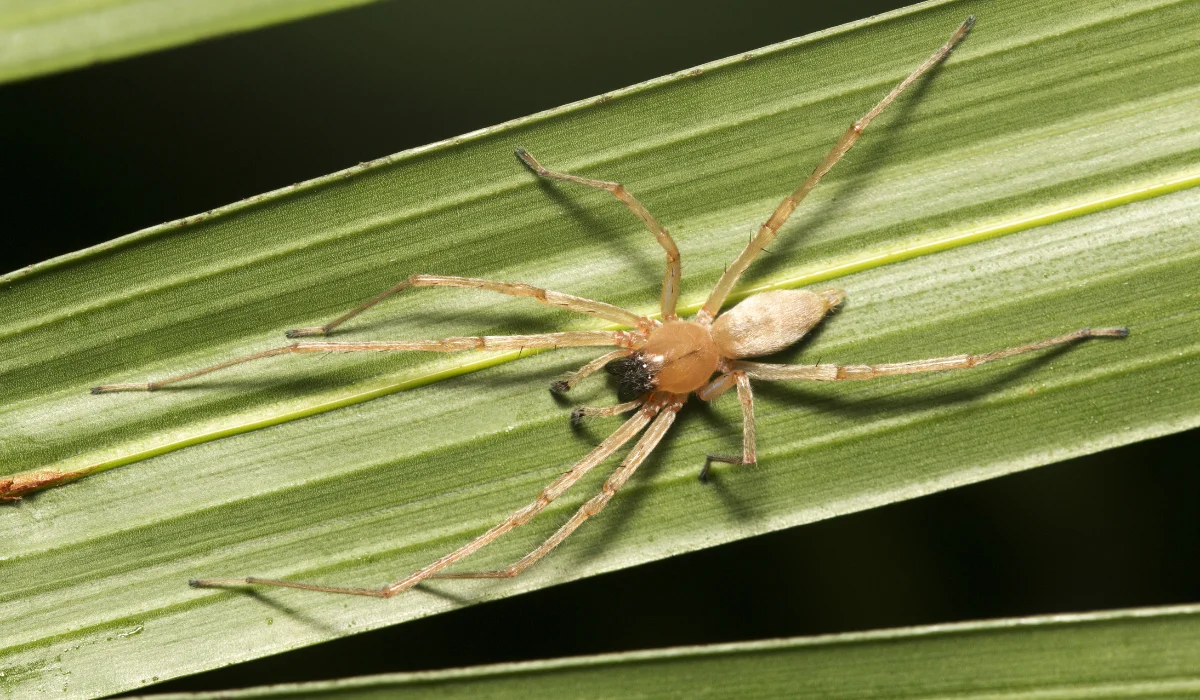Named after exterminator Tom Rasberry, the tawny crazy ant, also known as the Rasberry crazy ant, is an invasive ant species known for their erratic behavior. These pests are drawn to specific conditions that make your home a perfect environment for their crazy ant colonies.
Here’s a breakdown of what attracts these ants and how to keep them away.
Key Takeaways
- Crazy ants are drawn to food like sugary drinks, greasy spills, pet kibble, and honeydew from aphids.
- They thrive in warm, humid areas and love damp spots like basements, clogged gutters, or leaky pipes.
- These ants nest in hidden spaces like wall voids, attics, outdoor wood piles, or electrical equipment, causing damage.
- Prevent infestations by sealing cracks, cleaning spills, fixing leaks, and calling professionals if the problem grows.
4 THINGS THAT DRAW CRAZY ANTS TO YOUR HOUSE
Crazy ants don’t invade homes for no reason. If your home has what they’re looking for, it’s like rolling out the red carpet for them.
Here’s what might be attracting crazy ants to your home:
1. Food Sources and Secretions
Crazy ants aren’t picky eaters. They’ll go after just about anything they can find.
They love sweet treats like sugary drinks or honeydew, a sticky substance left behind by aphids on plants. They’re also drawn to protein-packed foods, like pet kibble or leftovers tossed in the trash. Even grease and fats can catch their attention, making kitchens and outdoor grills common hotspots.
Once they find a reliable food source, they’ll call in reinforcements, and before you know it, their large numbers can overwhelm your home, leading to a crazy ant infestation.
2. Moisture and Climates
Crazy ants love warm, humid climates, so they’re such a problem along the Gulf Coast.
They’re especially drawn to damp areas around your home where they can find water. Whether it’s a leaky faucet, clogged gutters, or a damp basement, these moisture-filled spots are like rolling out the welcome mat for them.
Once they settle in, it’s easy for them to set up crazy ant nests in these sheltered locations, making the problem even harder to control.
3. Warm, Protected Habitats
Crazy ants are always on the lookout for safe, warm places to call home.
They love nesting sites like old stumps, decaying wood, or piles of mulch and leaf litter. Inside your home, they’ll settle into insulated areas like walls or attics where they’re hidden and protected.
These ants are tough competitors and can push out native ants like carpenter ants, building massive super colonies that are hard to get rid of without help from exterminators.
4. Electrical Equipment
One of the most unique behaviors of crazy ants is their attraction to electrical equipment. These ants often invade circuit breakers, air conditioning units, and home appliances.
This behavior can lead to short circuits and costly repairs. The attraction is believed to be related to pheromones released during electrostatic interactions or when a worker ant is electrocuted.
SIGNS OF A CRAZY ANT INFESTATION
To recognize a crazy ant infestation, watch for:
- Erratic movements of reddish-brown or dark-brown ants with long legs and antennae.
- Dense trails of ants near food or water sources.
- Damage to electrical equipment caused by their presence.
- Activity around outdoor aphids, which produce honeydew.
HOW TO PREVENT CRAZY ANT INFESTATIONS

Remove Food and Water Sources
Crazy ants are drawn to food and water, so clean up spills and crumbs right away. Store food in airtight containers, fix leaks, and remove standing water to make your home less appealing to them.
Seal Entry Points
Sealing up access points can make a big difference in keeping crazy ants out. Look for cracks, gaps, and crevices in your walls or foundation, and seal them up with caulk.
Don’t forget about windows and doors—adding weather stripping can help keep these tiny invaders from sneaking in.
Control Outdoor Pests
Crazy ants love the honeydew produced by aphids and other insects, so treating your plants for these pests can help reduce the chances of an ant invasion.
While you’re at it, make sure to trim back bushes, shrubs, and trees that touch your home.
Use Ant Control Methods
If crazy ant populations have already moved in, it’s time to use the right tools to get them out. Ant baits work well because they target the whole colony. Place the bait near ant trails or spots where you’ve seen activity.
Stay away from DIY ant killers. Those can scatter the ants and make the infestation harder to control.
WHEN TO CALL A PROFESSIONAL
Dealing with crazy ants can quickly become overwhelming for homeowners, but LaJaunie’s Pest Control is here to help.
Our team is equipped to manage crazy ant infestations effectively and prevent future invasions. We also handle other species of ants, like carpenter and fire ants, to ensure your home stays pest-free.
Contact us today to protect your home from these invasive pests.
 By: LaJaunie's Pest Control
By: LaJaunie's Pest Control 


